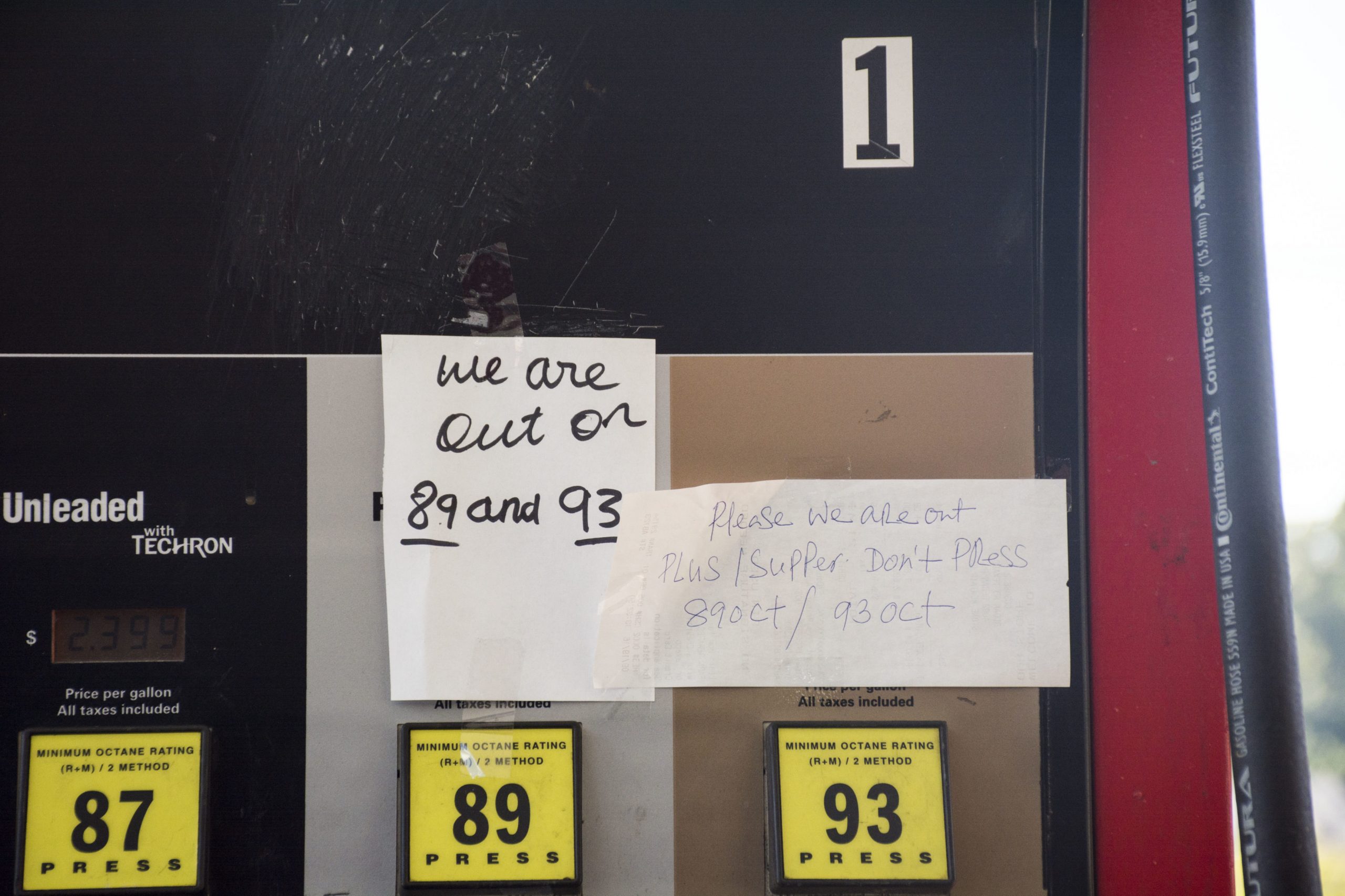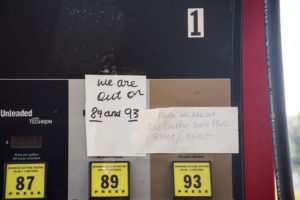

Photo by Jade Johnson | The Signal
Following the leak of an Alabama pipeline at the end of last week that resulted in the loss of more than 250,000 gallons of gas, residents of the Atlanta metropolitan region and surrounding areas were subjected to gas shortages and higher prices.
Most gas stations raised the prices of gas due to the high demand for the very limited amounts of gas available as a result of the leak. Many of them had run out of the regular unleaded gas, so the only available options left for consumers is the more expensive premium or diesel gas.
Senior sociology student, Jessica Sharp, said that no station near her apartment had the regular gas and the gas that was available was about three dollars a gallon.
Commuter students had to consider alternate ways of getting to their classes, but some were solely dependent on their vehicles.
Senior sports management student, Phillip Quinones, said he usually averages about 70 miles a day for his commute from his home in Lithonia to school and work.
“I’ve got to drive to school, got to drive to work, which is in Marietta at night, all the way back to Lithonia,”said Quinones.
This shortage is proving itself to be a very challenging obstacle for some students to overcome.
According to an on-scene coordinator for the Environmental Protection Agency (EPA) and Georgia State alumni, Chuck Berry, commuter inconvenience was not the only thing that the leak caused. Berry said that despite the fact that the situation was well contained, there was still damage to the environment nearby, but it was minimal.
“The fuel spill hit the sedimentation pond and was trapped in it,” said Berry.
The pond with the fuel spill was a near a retention pond made by a mining company about 10 years ago to control runoff from sedimentation. The leak was was contained mostly within the surface of the pond. However, damages to it were severe and immediate areas around the source of the leak experienced some losses in vegetation and animal life.
“There was some wildlife killed, we had a few mammals, a few birds, and some reptiles, but luckily the impacts of wildlife were minimal,” Berry said.
In regards to the clean-up process, it will take quite a while to restore the impacted area back to normal. The water quality of the pond had also been severely impacted by the gas leak and will be on a long-term regime to purify the water quality. Berry said that there are three stages of environmental impact and that right now they are dealing with the first, which is the emergency stage.
“Right now we have exposed gasoline on the surface, we have vegetation covered in gasoline, we have soil saturated in gasoline,” said Berry.
There is cooperation between the Alabama Department of Environmental Management (ADEM) and EPA during this stage of the disaster, however the EPA will release the site over to ADEM completely for long-term cleanup. The long-term process will consist of more water treatment, soil remediation, and groundwater monitoring.
